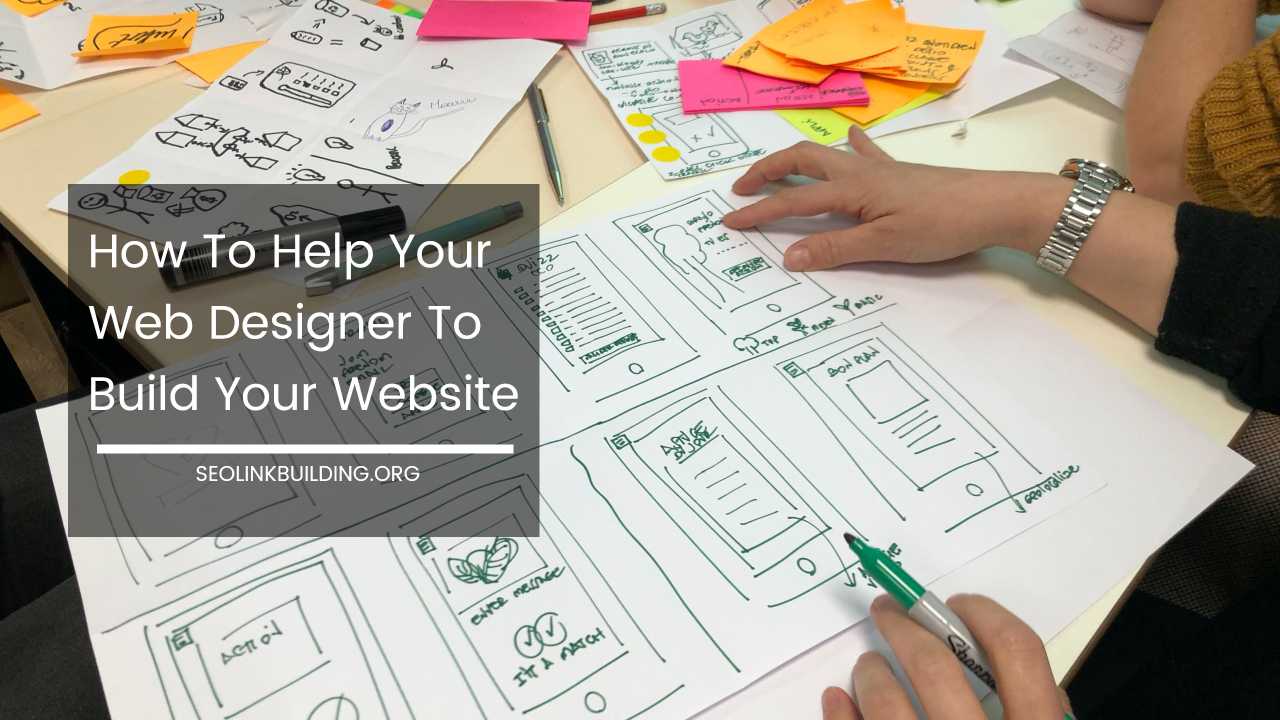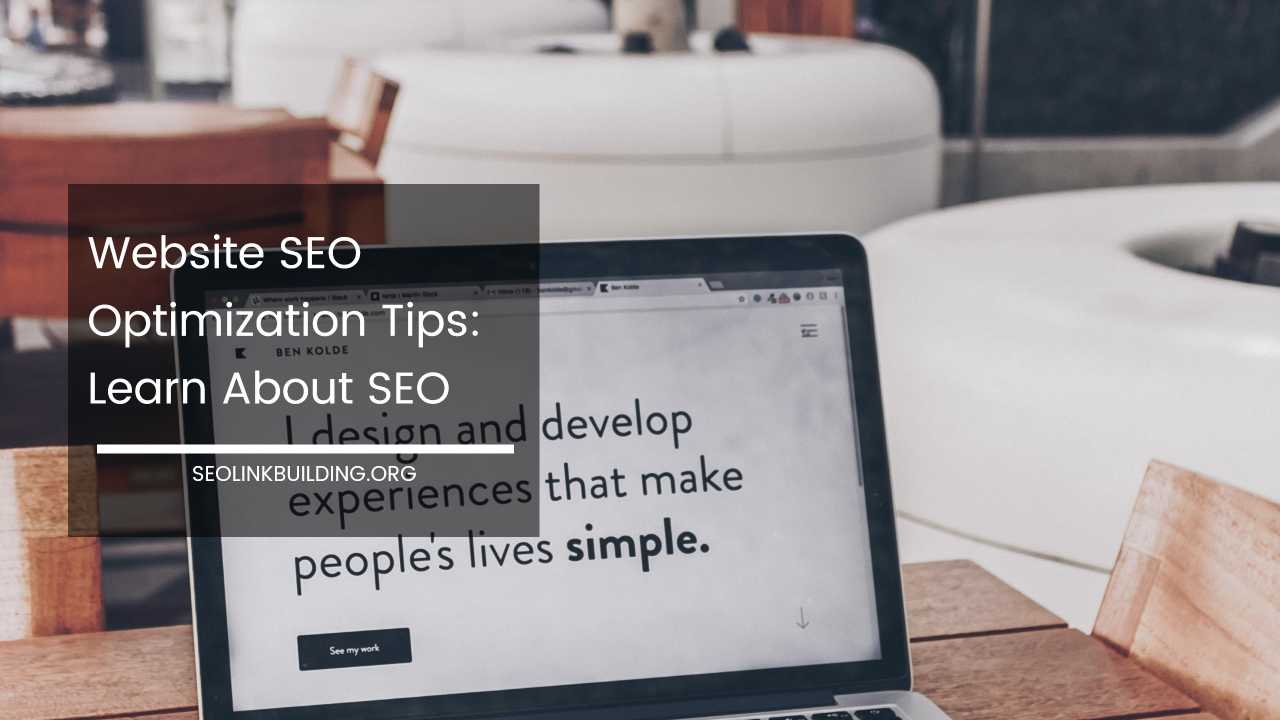How to Help Your Web Designer to Build Your Website

How To Help Your Web Designer To Build Your Website: A Guide to Collaboration and Success
Congratulations! You’ve decided to invest in a website, a crucial step in establishing your online presence. But a website isn’t built in a day, and a smooth collaboration with your web designer is key to achieving your vision.
This expanded guide delves deeper into each stage of the process, equipping you with the knowledge and strategies to effectively partner with your designer, ensuring a website that’s both aesthetically pleasing, functionally sound, and drives results.
Planning: The Cornerstone of a Thriving Website
Before diving headfirst into design elements, take a step back and solidify your website’s goals. What do you want visitors to achieve?
Is it to generate leads, showcase your portfolio, sell products online, or establish yourself as an industry authority?
Answering these questions will guide the entire development process and ensure your website is strategically designed to meet your objectives.
Defining Your Target Audience:
- Who are you trying to reach? Understanding your target audience’s demographics, online behavior, and pain points is crucial. Consider creating user personas – detailed profiles representing your ideal customers – to tailor your website’s content and tone effectively.
- Conduct market research: Surveys, focus groups, and competitor analysis can provide valuable insights into your target audience’s needs and online behavior. Utilize social media listening tools to understand the conversations happening around your industry or niche.
- Embrace empathy: Think like your target audience. What questions do they have? What information are they seeking? What are their frustrations? By stepping into their shoes, you can craft a website that truly resonates with them.
Identifying Your Competitors:
Don’t exist in a vacuum. Analyze successful websites in your niche. What elements resonate with you? Conversely, what could be improved? Here’s a structured approach:
- List your top competitors: Identify the websites that rank high in search results for your target keywords or that are well-regarded within your industry.
- Analyze their websites: Conduct a thorough evaluation, focusing on website design, content strategy, user experience (UX), and conversion optimization techniques.
- Find inspiration, not imitation: Don’t simply copy what your competitors are doing. Use their strengths as a springboard to develop a unique and impactful website that stands out in the crowd.
Content is King: Planning the Information Architecture
Content is the lifeblood of any website. Plan the information architecture of your website meticulously. What key pages are essential (e.g., About Us, Services, Contact)? Craft clear, concise, and engaging website copy that speaks directly to your target audience and achieves your website’s goals. Here are some additional considerations:
- Content Audit (Optional): If you already have an existing website, conduct a content audit to evaluate its effectiveness. Identify high-performing content, outdated information, and gaps that need to be filled. This analysis will inform your website’s content strategy moving forward.
- Content Hierarchy: Establish a clear hierarchy for your website content. Prioritize the most important information on your homepage and main menu, with sub-pages providing deeper dives into specific topics.
- Content Tone and Voice: Develop a consistent tone and voice for your website content. This could be informative, authoritative, playful, or something else entirely – ensure it aligns with your brand personality and resonates with your target audience.
Crafting a Website Blueprint: Site Mapping and Wireframing
-
Site Map: Think of a site map as a blueprint of your website’s structure. It visually represents the hierarchy of pages and how they connect. A well-organized site map ensures a user-friendly browsing experience. There are many free online site mapping tools available, such as XMind, MindMeister, or even simple tools like Google Docs.
- Start with broad categories: Begin by outlining the main sections of your website (e.g., About Us, Services, Products, Blog).
- Drill down into sub-pages: Under each main section, list the sub-pages that will provide more detailed information.
- Prioritize pages: Rank pages based on their importance to your website’s goals.
- Optimize navigation: Design a clear and intuitive navigation structure that allows users to find the information they need easily.
-
Wireframing: Wireframes are low-fidelity mockups that depict the website’s layout, functionality, and information flow. They focus on usability rather than aesthetics. Here are some key aspects to consider during wireframing:
- Page Layouts: Sketch out the basic layout of each page, including the placement of navigation menus, content sections, calls to action (CTAs), and forms.
- User Interaction: Consider how users will interact with your website. Will they be able to filter products? Add items to a shopping cart? Schedule appointments? Wireframe the user flow for key functionalities.
- Prioritize Usability: The primary goal of wireframing is to ensure a smooth and intuitive user experience. Focus on clear navigation, logical information hierarchy, and easy-to-understand layouts. There are several online wireframing tools available to streamline this process, such as Figma, Balsamiq Mockups, or even freehand sketching tools.
Communication is Key: Working Effectively with Your Web Designer
-
Project Brief: A well-defined project brief acts as a roadmap for your web designer. It should outline your website’s goals, target audience, brand identity, and desired functionalities. Here are some additional elements to consider including:
- Website Style Inspiration: Provide your designer with examples of websites that resonate with your vision in terms of design aesthetic and user experience.
- Content Inventory: If you have existing website content, list it and indicate where it should be incorporated into the new website.
- Success Metrics: Define how you will measure the success of your website. Will it be through increased leads, online sales, or improved brand awareness? Having clear metrics allows you to track progress and make data-driven decisions.
-
Open Communication: Maintain regular communication with your designer throughout the development process. Share feedback promptly, and don’t hesitate to ask questions. The more transparent the communication, the better aligned the final product will be with your expectations. Here are some tips for effective communication:
- Schedule regular meetings: Establish a communication cadence with your designer, whether it’s weekly or bi-weekly meetings, to discuss progress and address any concerns.
- Utilize project management tools: Collaboration tools like Trello, Asana, or Basecamp can help streamline communication, track tasks, and ensure everyone is on the same page.
- Provide clear and concise feedback: When providing feedback, be specific and actionable. Focus on the overall user experience and how it can be improved.
-
Respect Expertise: While you have a clear vision for your website, your designer brings their expertise in web design principles, user experience (UX), and current trends. Here’s how to foster a collaborative environment:
- Be open to suggestions: Trust your designer’s recommendations, but feel empowered to ask questions and provide rationale for your preferences.
- Focus on the big picture: While aesthetics are important, prioritize functionality and user experience. Your designer can translate your vision into a website that is both visually appealing and easy to navigate.
- Embrace iteration: The design process is iterative. Expect revisions and adjustments as you move forward. Be flexible and open to refinements based on user testing and feedback.
Design and Development: Bringing Your Website to Life
-
Visual Identity: Provide your designer with your brand assets, including logos, color palettes, and fonts. Consistency in visual identity builds brand recognition and trust. Here are some additional considerations:
- Brand Guidelines: If you have a brand style guide, share it with your designer. This document outlines your brand’s visual identity, including logo usage, color codes, and typography.
- Mood Boards: Create mood boards to visually communicate your desired website aesthetic. These can be compiled using online tools like Pinterest or Milanote, or simply by collecting inspiring images and design elements.
- Responsiveness: In today’s mobile-centric world, ensure your website is responsive and adapts seamlessly to different screen sizes. Your designer can create a responsive layout that delivers an optimal viewing experience across desktops, tablets, and smartphones.
-
Stock Photos and Videos: High-quality visuals enhance user engagement and brand perception. Here are some strategies for incorporating visuals:
- Professional Photography: Consider investing in professional photography or videography to showcase your products, services, or team.
- Stock Photos and Videos: If budget is a concern, explore royalty-free stock photo websites like Shutterstock or Pexels. Ensure the visuals align with your brand identity and resonate with your target audience.
- User-Generated Content (UGC): UGC can add a touch of authenticity to your website. Consider incorporating customer testimonials, social media posts, or behind-the-scenes glimpses.
Content is King: Feeding Your Website with Engaging Content
- Website Copy: Provide well-written, informative, and engaging website copy. Here are some key aspects to consider:
-
- Focus on benefits: Don’t just list features; explain how your products or services solve your target audience’s problems and improve their lives.
- Search Engine Optimization (SEO): Optimize your website content with relevant keywords to improve its ranking in search engine results pages (SERPs). There are many SEO tools and online resources available to assist you.
- Readability: Strive for clear, concise, and easy-to-understand language. Use bullet points, subheadings, and visuals to break up large blocks of text.
- Call to Actions (CTAs): Tell your visitors what you want them to do next. Whether it’s subscribing to your newsletter, contacting you, or making a purchase, clear CTAs guide users towards your desired outcome.
-
Blog Integration: A regularly updated blog is a fantastic way to attract organic traffic, establish yourself as a thought leader in your industry, and improve your website’s SEO. Here are some tips for creating a successful blog:
- Develop a content calendar: Plan your blog posts in advance, ensuring a consistent flow of fresh content.
- Focus on valuable content: Create informative and engaging blog posts that address your target audience’s pain points and interests.
- Promote your blog: Share your blog posts on social media, email marketing campaigns, and other online channels.
Building an Engaging User Experience (UX):
User experience (UX) refers to how visitors interact with your website. Here are some strategies to optimize your website’s UX:
- Intuitive Navigation: Design a clear and intuitive navigation structure that allows users to find the information they need easily. Consider using mega menus for websites with a lot of content.
- Fast Loading Speeds: Nobody likes a slow website. Optimize your website images, code, and plugins to ensure fast loading speeds for a smooth user experience.
- Mobile-Friendly Design: As mentioned earlier, a responsive website design is essential. Test your website across different devices to ensure optimal viewing and functionality on all screen sizes.
- Accessibility: Make your website accessible to everyone, including users with disabilities. Follow accessibility guidelines like WCAG (Web Content Accessibility Guidelines) to create an inclusive user experience.
Testing and Launch: The Final Stretch
-
Cross-Browser Testing: Ensure your website functions flawlessly across different web browsers and devices. Popular browsers for testing include Chrome, Firefox, Safari, Edge, and Internet Explorer (older versions still have a significant user base).
-
Usability Testing: Before launching, conduct usability testing to identify any navigation issues or confusing elements. Here are some ways to conduct usability testing:
- Recruit test users: Find a small group of individuals from your target audience to participate in usability testing.
- Observe user behavior: Watch how users interact with your website, noting any difficulties or areas for improvement.
- Gather feedback: Ask users for their honest feedback on the website’s design, usability, and overall experience.
-
Search Engine Optimization (SEO): Optimize your website content with relevant keywords and meta descriptions to improve its ranking in search engine results pages (SERPs). There are many SEO tools and online resources available to assist you, such as Google Search Console, SEMrush, and Ahrefs. Here are some additional SEO considerations:
- Website Title Tags and Meta Descriptions: Craft compelling title tags and meta descriptions that accurately represent your website content and encourage clicks from search engine results pages (SERPs).
- Image Alt Text: Include descriptive alt text for all website images. This improves accessibility and helps search engines understand your content.
- Backlinks: High-quality backlinks from reputable websites can significantly boost your website’s SEO ranking. Develop a content marketing strategy to attract backlinks organically.
Launch and Beyond: Maintaining Your Website for Success
- Website Launch: Once you’re confident that your website is optimized and functions flawlessly, it’s time to launch! Celebrate your accomplishment and prepare to promote your website.
- Content Updates: Regularly update your website with fresh content to keep visitors engaged and improve SEO. This could include blog posts, case studies, product updates, or industry news.
- Security Updates: Stay vigilant about website security threats. Regularly update your website content management system (CMS) and plugins to address vulnerabilities. Consider implementing additional security measures like SSL certificates to encrypt user data and protect your website from malware attacks.
-
Analytics Tracking: Monitor website traffic and user behavior using website analytics tools like Google Analytics. This data provides valuable insights into what’s working and what areas need improvement. Here are some key metrics to track:
- Website Traffic: Analyze website traffic sources, user demographics, and visitor behavior to understand how people are finding your website and what content resonates most.
- Conversion Rates: Track the rate at which visitors take desired actions on your website, such as signing up for your email list or making a purchase.
- Engagement Metrics: Monitor metrics like page views, bounce rates, and time spent on site to gauge user engagement and identify areas for improvement.
-
A/B Testing: A/B testing allows you to compare different versions of your website elements (e.g., headlines, CTAs, landing page layouts) to see which ones perform better. This data-driven approach helps you continuously optimize your website for conversions.
-
Stay Informed: The digital landscape constantly evolves. Stay up-to-date on the latest web design trends, SEO best practices, and content marketing strategies. Utilize online resources, industry publications, and webinars to stay ahead of the curve.
Final Word: Building a Website is a Collaborative Journey
By following these steps and fostering open communication with your web designer, you can ensure a website that not only looks great but also achieves your business objectives.
Remember, a website is a living entity. Continually monitor its performance, make data-driven adjustments, and stay current with digital trends to maintain a website that thrives in the ever-evolving online world.
Bonus: Website Building Resources
Here’s a list of helpful resources to get you started:
- Free Online Site Mapping Tools: XMind, MindMeister, Google Docs
- Wireframing Tools: Figma, Balsamiq Mockups, Freehand sketching tools
- Project Management Tools: Trello, Asana, Basecamp
- Stock Photo Websites: Shutterstock, Pexels
- SEO Tools: Google Search Console, SEMrush, Ahrefs
- Website Analytics Tools: Google Analytics
- Web Design Inspiration: Behance, Awwwards, Dribbble
Congratulations on taking the first step towards building a successful online presence! By investing in a well-designed and strategically developed website, you’re paving the way to connect with your target audience, achieve your business goals, and establish yourself as a leader in your industry.













